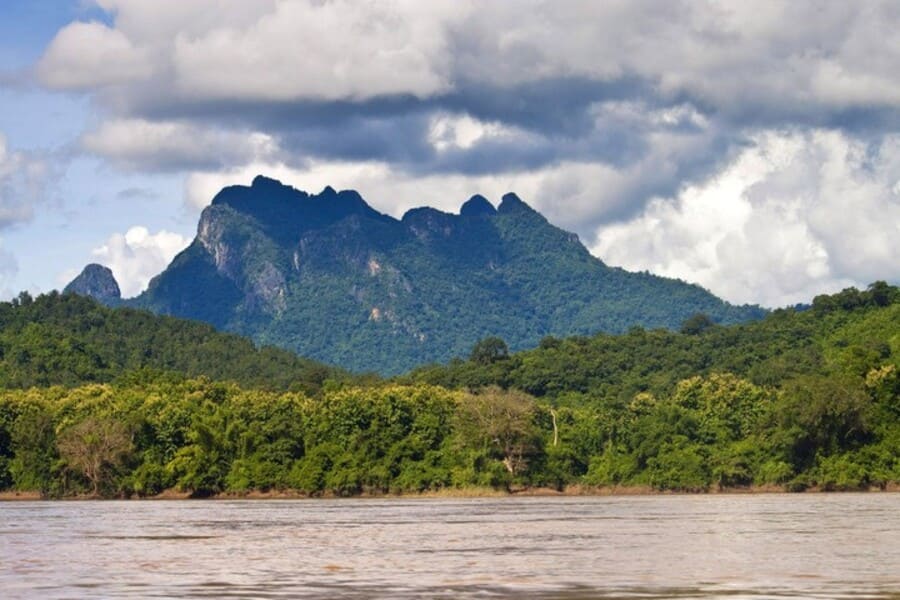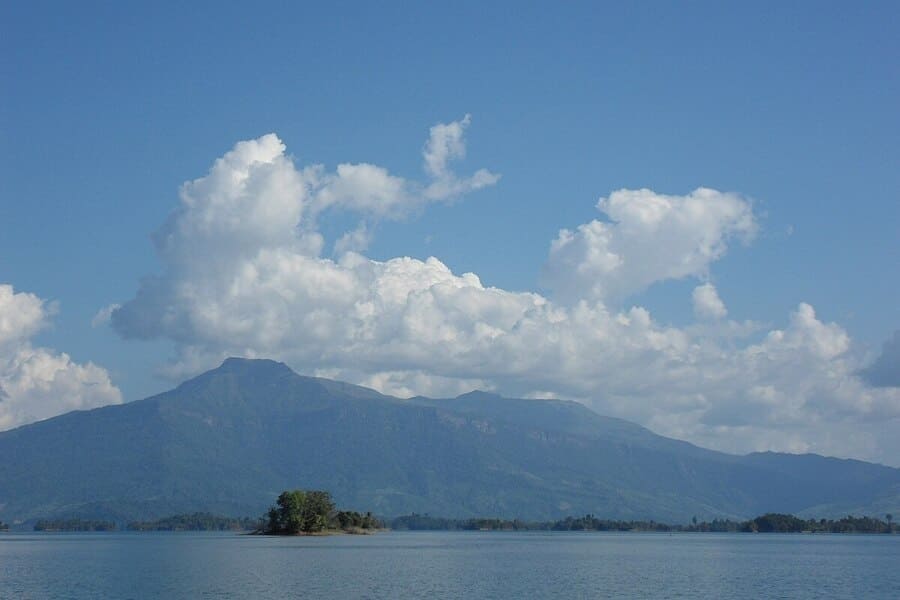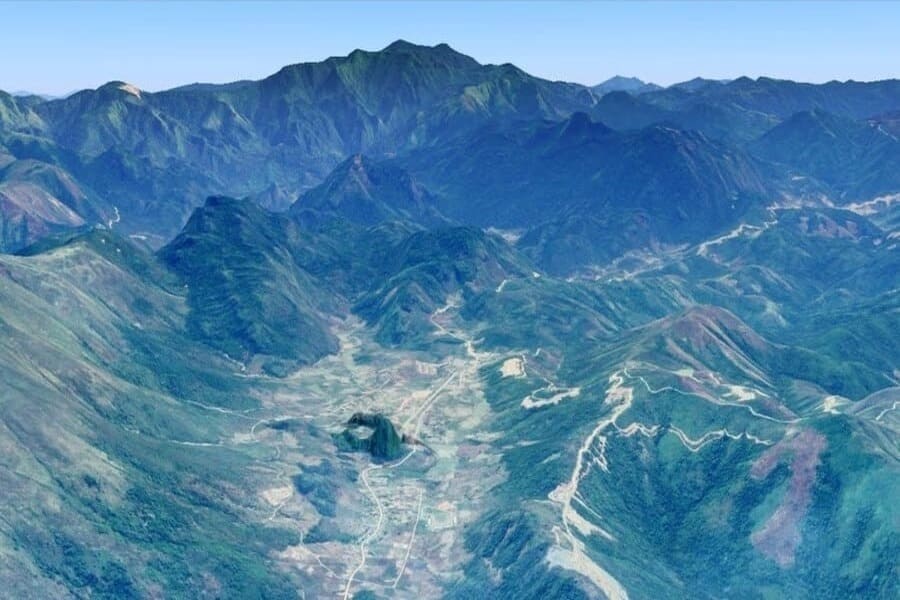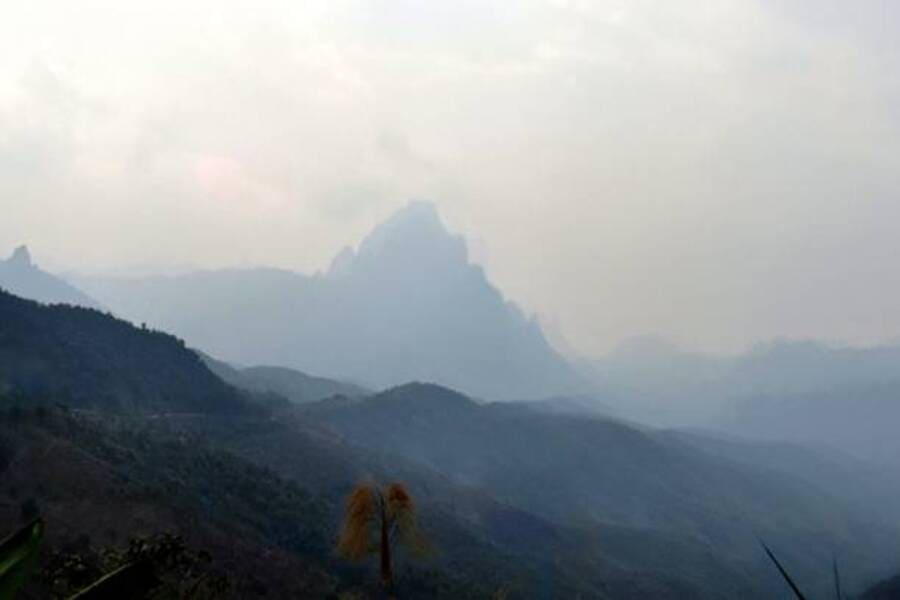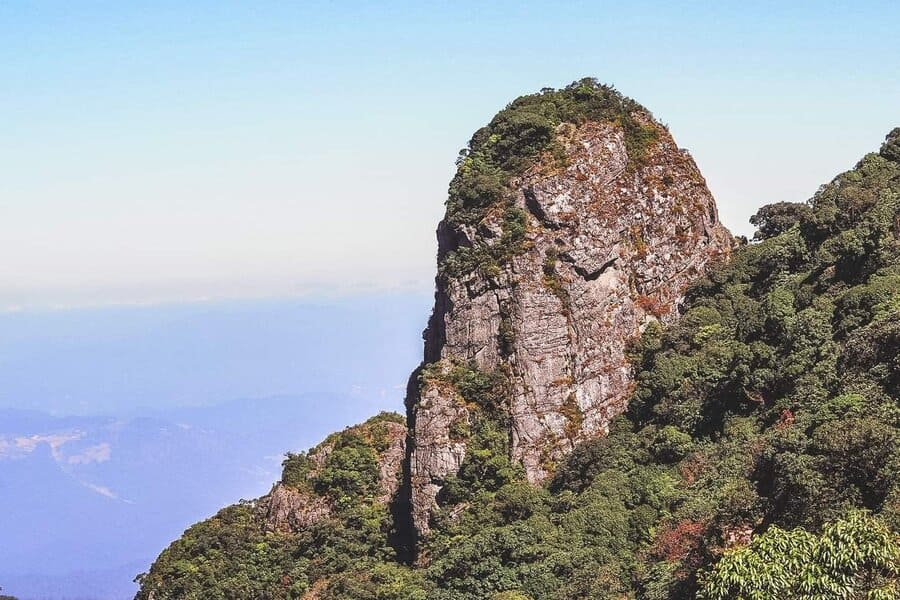Embark on an unforgettable laos tours and conquer the majestic heights of Phou Bia, the nation's tallest peak. Offering exhilarating treks amidst lush forests and remote landscapes, Phou Bia promises adventure seekers an unparalleled experience.
Urgent Notice:
Authorities have restricted visitor access to certain areas of Phou Bia due to the recent discovery of unsafe landmines and unexploded ordnance. For the safety of all, it is crucial to avoid these locations until further notice. Please stay informed and follow local guidelines to ensure your well-being. Stay tuned for updates and take all necessary precautions!
An Overview of Phou Bia
The Location of Phou Bia
Phou Bia is located in the northern part of Laos, specifically in the Xiangkhoang Province. It is situated within the Annamese Cordillera mountain range, which spans across Laos and Vietnam.
The mountain is approximately 2,820 meters (9,252 feet) high, making it the tallest peak in Laos. Its remote location and rugged terrain contribute to its reputation as a challenging yet rewarding destination for trekkers and adventurers.
The Climate of Phou Bia
Phou Bia experiences a diverse climate influenced by its elevation and geographical location. At lower altitudes, the climate tends to be tropical, characterized by hot and humid conditions with distinct wet and dry seasons. As elevation increases, temperatures become cooler, and mist-shrouded peaks create an atmospheric ambiance. Rainfall is abundant, particularly during the wet season, nurturing the lush vegetation that blankets the mountain slopes.
The Temperature of Phou Bia
Due to its elevation, Phou Bia experiences cooler temperatures compared to the surrounding lowlands. Temperatures can vary significantly depending on the time of year and altitude, with cooler conditions prevailing at higher elevations. Average temperatures range from mild to cool, with temperatures dropping notably during the nighttime. Travelers should come prepared for fluctuating weather conditions, including sudden changes in temperature and occasional fog or mist.
The Flora and Fauna in Phou Bia
The biodiverse ecosystems of Phou Bia are home to a rich array of flora and fauna, reflecting the mountain's status as a haven for biodiversity. Dense forests cloak its slopes, with towering trees and lush undergrowth providing habitat for countless species of plants and animals. Rare and endemic species can be found here, including various orchids, bamboo species, and elusive wildlife such as clouded leopards, Asiatic black bears, and gibbons. Birdwatchers are also treated to sightings of colorful avian species, including hornbills and pheasants.
Do Trekkings in Phou Bia
Trekking in Phou Bia, Laos, is an immersive experience that promises adventurers a journey through pristine wilderness and breathtaking landscapes. With a variety of trails catering to all levels of expertise, from novice hikers to seasoned mountaineers, there's something for everyone to explore.
Trekking routes wind through lush forests, where towering trees and vibrant flora create a serene backdrop for outdoor enthusiasts. Along the way, trekkers may encounter cascading waterfalls, hidden caves, and panoramic viewpoints offering sweeping vistas of the surrounding countryside. For those seeking a challenge, summiting Phou Bia itself presents a thrilling adventure, rewarded with unparalleled views from the highest point in Laos.
Whether it's a day hike or a multi-day expedition, trekking in Phou Bia offers an opportunity to connect with nature, push personal boundaries, and create lasting memories in one of Southeast Asia's most captivating destinations.
Tips for Trekking in Phou Bia for Tourists
For tourists embarking on a trekking adventure in Phou Bia, Laos, here are some essential tips to ensure a safe and enjoyable experience:
- Prepare Physically and Mentally: Trekking in Phou Bia can be physically demanding, especially if you plan to summit the mountain. Engage in regular physical activity and stamina-building exercises prior to your trip. Additionally, mentally prepare yourself for the challenges of hiking at high altitudes and in potentially unpredictable weather conditions.
- Pack Wisely: Pack lightweight, moisture-wicking clothing suitable for hiking in varying weather conditions. Essentials include sturdy hiking boots, a waterproof jacket, sun protection (hat, sunglasses, sunscreen), plenty of water, energy-rich snacks, a first aid kit, and a flashlight or headlamp for night treks or emergencies. It's essential to carry a map, compass, or GPS device for navigation.
- Respect Local Customs and Environment: Be respectful of local customs and traditions, especially when interacting with villagers along the trekking routes. Leave no trace by properly disposing of waste and refraining from littering. Stay on designated trails to minimize environmental impact and avoid disturbing wildlife.
- Plan Ahead and Inform Others: Before setting out on your trek, inform someone reliable about your itinerary, expected return time, and emergency contact information. Check weather forecasts and trail conditions beforehand, and adjust your plans accordingly. Consider hiring a local guide or joining a guided trekking tour for added safety and local insights.
- Be Flexible and Stay Safe: Be prepared for unexpected changes in weather or trail conditions, and be flexible with your plans. Listen to your body and know your limits; if you experience any signs of altitude sickness or exhaustion, descend to lower elevations immediately. Safety should always be the top priority.
How to get to Phou Bia?
The nearest major airport to Phou Bia is in Vientiane, the capital city of Laos. From Vientiane, you can take a domestic flight to Xieng Khouang Province, where Phou Bia is located. The main airport in Xieng Khouang is Phonsavan Airport. However, keep in mind that flights to this region may have limited schedules and availability.
- By Road
From Phonsavan, you'll need to travel by road to reach the vicinity of Phou Bia. The journey typically involves hiring a local guide or arranging transportation with a tour operator. The roads leading to the mountain may be unpaved and rough, so be prepared for a bumpy ride. It's advisable to hire a four-wheel-drive vehicle or a sturdy off-road vehicle for this part of the journey.
- Guided tour
Many travelers opt to join guided tours or trekking expeditions that include transportation to Phou Bia as part of the package. These tours often provide experienced guides, logistical support, and sometimes even camping equipment for multi-day treks.

